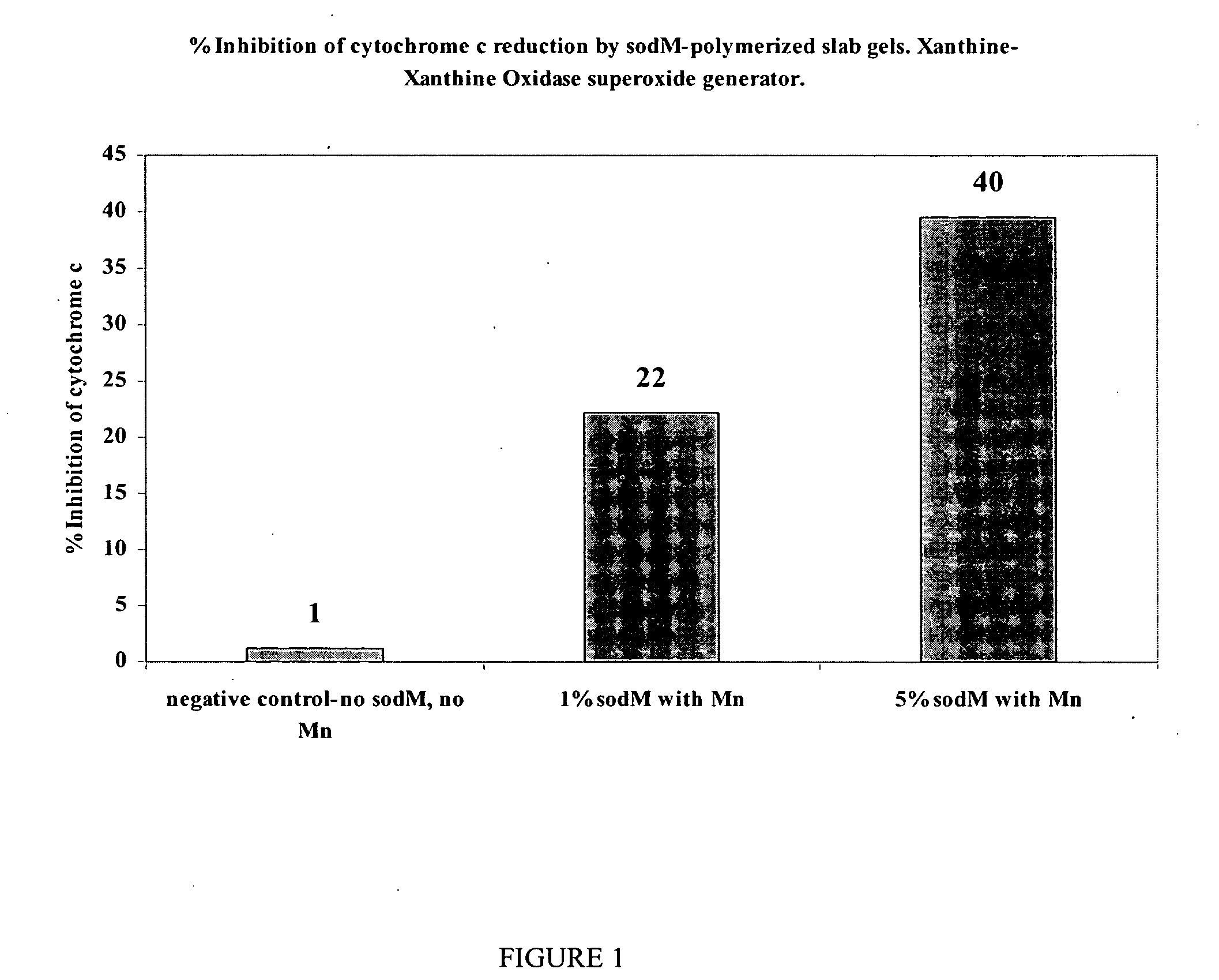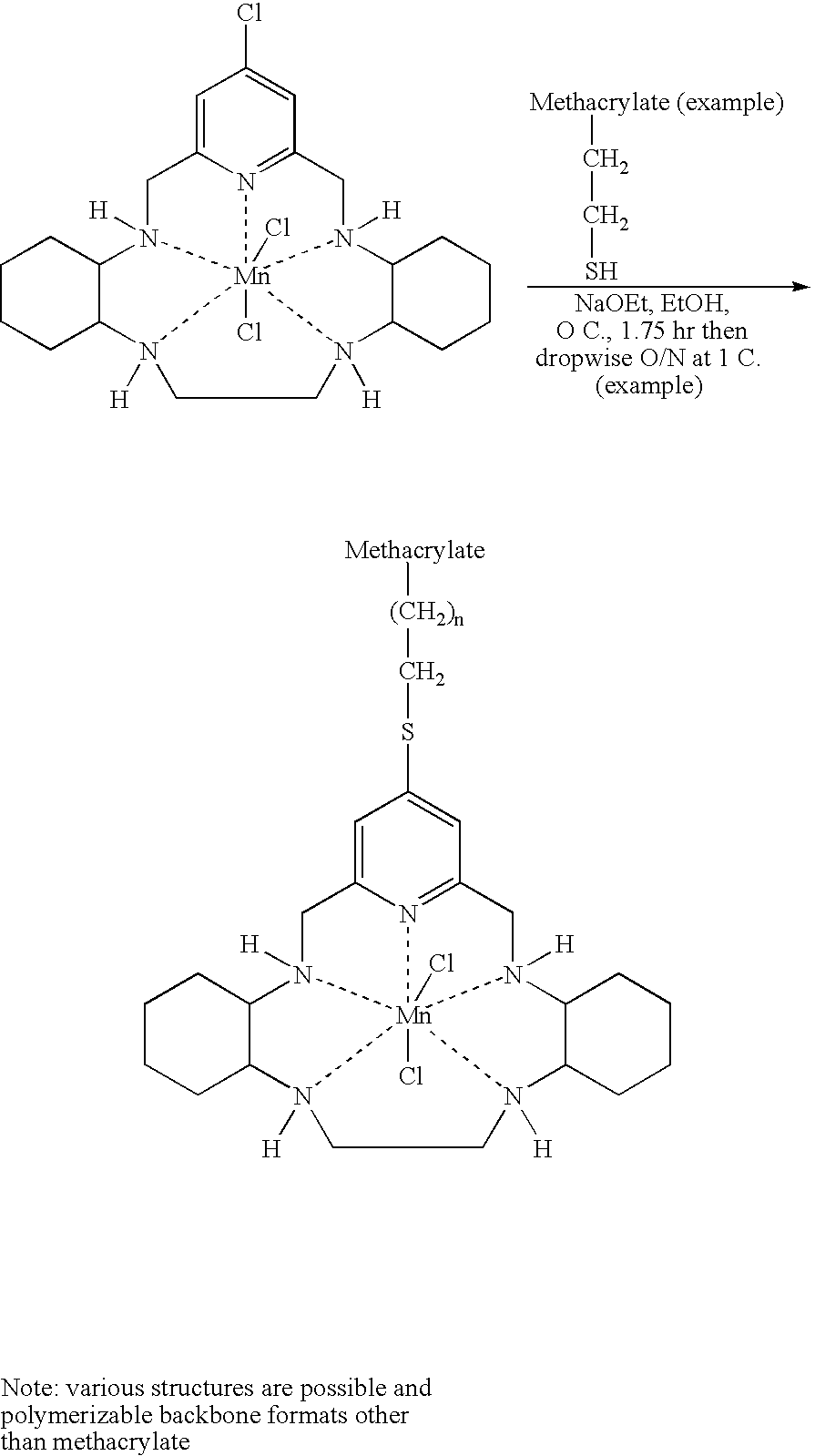Oxidation-resistant indicator macromolecule
- Summary
- Abstract
- Description
- Claims
- Application Information
AI Technical Summary
Benefits of technology
Problems solved by technology
Method used
Image
Examples
example 1
[0075] The following working example utilizes the following synthesis scheme:
[0076] The synthesis of the SODmethacrylamide monomer began with commercially available compounds I and V. The syntheses of intermediates II, VI, VII and VIII were accomplished according to the methods described in U.S. Pat. No. 6,214,817 B 1, incorporated herein by reference. The other intermediates were prepared as described below.
Synthesis of Intermediate III
[0077] Compound II (29.4 g, 128 mmol) was suspended in anhydrous ethanol (800 mL) and cooled to 0° C. To this suspension, sodium borohydride (9.66 g, 256 mmol) was added in small portions, the mixture stirred at 0° C. for one hour then allowed to warm to room temperature. Stirring was continued for 3 hours, then the mixture was heated to reflux overnight. The reaction mixture was cooled to room temperature, acetone (100 mL) was added and the solution heated to reflux for one hour. The reaction mixture was concentrated under vacuum to remove ethan...
example 2
Cytochrome C Assay on Ground Slab Gels
[0089] The assay below is designed to test the polymeric material's properties to resist superoxide radicals and thus protect the indicator monomer component of the material. The reduction of cytochrome c to quantitate O2− production in solution is well established. (J. Biol. Chem., 1969, 244(22), 6049; Am. J. Respir. Crit. Care Med. 1997, 156, 140-145). Superoxide radicals reduce cytochrome c, resulting in an increase in absorbance at 550 nm:
cytochrome c (oxidized)+O2−→cytochrome c (reduced)+O2
[0090] Superoxide dismutase (SOD) or SOD mimics inhibit cytochrome c reduction by scavenging O2−. That scavenging ability is quantitated as “% inhibition of cytochrome c” and is calculated by comparison to controls lacking in sod or sod mimics.
[0091] Xanthine with xanthine oxidase is used to generate superoxide radicals (O2−) via the reaction:
Solutions:
Cytochrome C stock: [0092] 17.3 mg cytochrome C (from horse heart) [0093] 2 mL distilled, deion...
PUM
 Login to View More
Login to View More Abstract
Description
Claims
Application Information
 Login to View More
Login to View More - R&D
- Intellectual Property
- Life Sciences
- Materials
- Tech Scout
- Unparalleled Data Quality
- Higher Quality Content
- 60% Fewer Hallucinations
Browse by: Latest US Patents, China's latest patents, Technical Efficacy Thesaurus, Application Domain, Technology Topic, Popular Technical Reports.
© 2025 PatSnap. All rights reserved.Legal|Privacy policy|Modern Slavery Act Transparency Statement|Sitemap|About US| Contact US: help@patsnap.com



